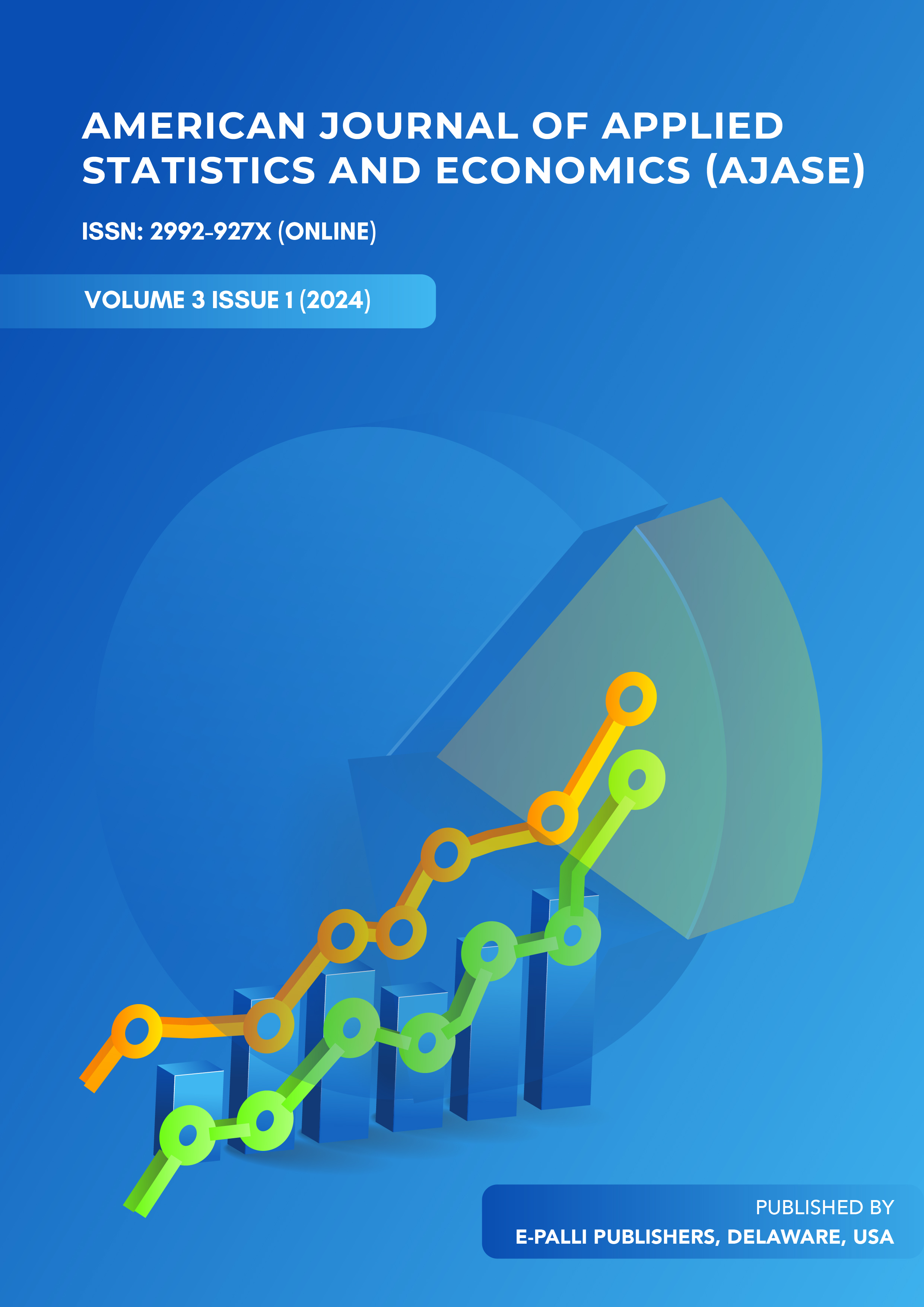The Efficacy of VICOBA Intervention in Alleviating Poverty in Emerging Economies: A Study of the ORGUT SEDIT VICOBA Lending Scheme Project in Morogoro, Tanzania
DOI:
https://doi.org/10.54536/ajase.v3i1.2616Keywords:
VICOBA, Microfinance, Poverty Alleviation, Effectiveness, Financial Inclusion, TanzaniaAbstract
Microfinance institutions have emerged as crucial agents in the fight against poverty, particularly in emerging economies. Despite debates about their effectiveness, microfinance interventions have contributed positively to socio-economic conditions, improving livelihood access. Recognising the importance of the microfinance subsector, Tanzania has instituted tools to foster financial inclusion. The Village Community Banks (VICOBA) are an example of these efforts, aiming to empower marginalised communities through financial inclusion and access to credit. This study assesses the effectiveness of the VICOBA intervention in alleviating poverty in Morogoro District, Tanzania. Using a cross-sectional design and logistic regression analysis, the study examines the relationship between key variables (access to credit, ability to save, access to insurance services, entrepreneurship skills) and poverty alleviation. The results show the effectiveness of access to credit, savings, and access to insurance services in poverty alleviation.
Downloads
References
Ahmad, I. (2022). Microfinance for poverty reduction in Pakistan: a sectoral analysis. Journal of Development and Social Sciences, 3(IV). https://doi.org/10.47205/jdss.2022(3-iv)10.
Ali, I., Hatta, Z., Azman, A., & Islam, S. (2016). Microfinance as a development and poverty alleviation tool in rural Bangladesh: a critical assessment. Asian Social Work and Policy Review, 11(1), 4–15. https://doi.org/10.1111/aswp.12106.
Ali, I., Islam, M. S., & Hatta, Z. A. (2015). Microfinance helps rural women for poverty reduction in the district of Bogra, Bangladesh. Sociology and Anthropology, 3(4), 218–225. https://doi.org/10.13189/sa.2015.030402.
Ali, Z., Asif, M., Nazir, N., Irshad, A., Ullah, I., & Ahmad, S. (2023). Financial and social efficiency of microcredit programmes of partner organisations of Pakistan poverty alleviation fund. Plos One, 18(3), e0280731. https://doi.org/10.1371/journal.pone.0280731.
Amsami, M., Mamman, A., & Lawal, N. (2021). The role of Islamic microfinance on poverty alleviation: a case study of al-Barakah microfinance bank, Lagos, lessons for Yobe microfinance bank, Nigeria. The International Journal of Business & Management, 9(9). https://doi.org/10.24940/theijbm/2021/v9/i9/bm2109-033.
Banerjee, S. & Jackson, L. (2016). Microfinance and the business of poverty reduction: critical perspectives from rural Bangladesh. Human Relations, 70(1), 63–91. https://doi.org/10.1177/0018726716640865.
Bansal, S. and Singh, A. (2020). Examining the social and entrepreneurial development of women through microfinance in the Indian context. The Journal of Management Development, 39(4), 407–421. https://doi.org/10.1108/jmd-05-2019-0146.
Batinge, B., & Jenkins, H. (2021). Gender and poverty reduction in Ghana: the role of microfinance institutions. International Journal of Economics and Finance, 13(8), 71. https://doi.org/10.5539/ijef.v13n8p71.
Beyene, N. L., & Dinbabo, M. F. (2019). An Empirical Evaluation of the Link Between Women Participation in the Village Savings and Loans Association (VSLA) and Poverty Reduction in Ethiopia. Journal of Reviews on Global Economics, 8, 566–580. https://doi.org/10.6000/1929-7092.2019.08.49
Chikwira, C., Vengesai, E., & Mandude, P. (2022). The impact of microfinance institutions on poverty alleviation. Journal of Risk and Financial Management, 15(9), 393. https://doi.org/10.3390/jrfm15090393.
Chowdhury, M. A., Rahman, S. M. K., & Salman, A. G. (2021). Economic and social impact of microfinance: empirical evidence from Bangladesh. Global Journal of Management and Business Research, pp. 63–73. https://doi.org/10.34257/gjmbrcvol21is1pg63.
Geremewe, Y. (2019). The role of microfinance institutions for poverty reduction in Ethiopia. Journal of Economics and Sustainable Development. https://doi.org/10.7176/jesd/10-5-04.
Hafeez, E., & Fasih, T. (2018). The growing population of Pakistani youth: a ticking time bomb or a demographic dividend. Journal of Education and Educational Development, 5(2), 211. https://doi.org/10.22555/joeed.v5i2.2022.
Hussain, J., Mahmood, S., & Scott, J. (2018). Gender, microcredit, and poverty alleviation in a developing country: the case of women entrepreneurs in Pakistan. Journal of International Development, 31(3), 247–270. https://doi.org/10.1002/jid.3403.
Imai, K. S., Gaiha, R., Thapa, G., & Annim, S. K. (2012). Microfinance and poverty—a macro perspective. World Development, 40(8), 1675–1689. https://doi.org/10.1016/j.worlddev.2012.04.013.
Kasali, T. A., Ahmad, S. A., & Lim, H. E. (2015). The Role of Microfinance in Poverty Alleviation: Empirical Evidence from South-West Nigeria. Asian Social Science, 11(21). https://doi.org/10.5539/ass.v11n21p183.
Kasali, T., Ahmad, S., & Lim, H. (2017). Microfinance and rural poverty alleviation: a reality? International Journal of Business and Society, 17(3). https://doi.org/10.33736/ijbs.538.2016
Khanam, D., Mohiuddin, M., Hoque, A., & Weber, O. (2018). Financing micro-entrepreneurs for poverty alleviation: a performance analysis of microfinance services offered by Brac, Asa, and Proshika from Bangladesh. Journal of Global Entrepreneurship Research, 8(1). https://doi.org/10.1186/s40497-018-0114-6.
Mamun, A., Uddin, M., & Islam, M. (2017). An integrated approach to Islamic microfinance for poverty alleviation in Bangladesh. Üniversitepark Bülten, 6(1), 33–44. https://doi.org/10.22521/unibulletin.2017.61.3.
Minja, D., Kimani, E., Makhamara, F., Moi, E. J., Mdoe, J., Gachanja, P., Oringo, J. O., Onditi, J. O., & Kirima, J. (2023). Table Banking and Women Economic Empowerment in Nakuru County, Kenya. American Journal of Youth and Women Empowerment, 2(2), 18–24. https://doi.org/10.54536/ajywe.v2i2.2235.
Ngong, C. (2023). Do cooperative credit unions reduce or increase poverty in Cameroon? Social Science Quarterly, 104(6), 1267–1281. https://doi.org/10.1111/ssqu.13313.
Ngong, C., Thaddeus, K., & Onwumere, J. (2021). Microfinancial inclusion nexus poverty alleviation: the case of Nigeria. Journal of Economic and Administrative Sciences, 38(4), 581-601. https://doi.org/10.1108/jeas-08-2020-0147.
Ullah, S., Majeed, A., & Popp, J. (2023). Determinants of a bank’s efficiency in an emerging economy: a data envelopment analysis approach. Plos One, 18(3), e0281663. https://doi.org/10.1371/journal.pone.0281663.
URT | The United Republic of Tanzania (2003) The Cooperative Societies Act No. 20 of 2003.
URT | The United Republic of Tanzania (2012) National Microfinance Policy. Ministry of Finance and Economic Affairs.
Utonga, D., & Ndoweka, B. N. (2023). Impact of Financial Development on Inflation in Tanzania: Empirical Evidence from the VECM Approach. American Journal of Economics and Business Innovation, 2(2), 64–73. https://doi.org/10.54536/ajebi.v2i2.1648
Waqas, H. & Md-Rus, R. (2018). Predicting financial distress: applicability of the o-score model for Pakistani firms. Business and Economic Horizons, 14(2), 389–401. https://doi.org/10.15208/beh.2018.28.
Downloads
Published
How to Cite
Issue
Section
License
Copyright (c) 2024 Jacob Kilamlya, Dickson Utonga

This work is licensed under a Creative Commons Attribution 4.0 International License.





